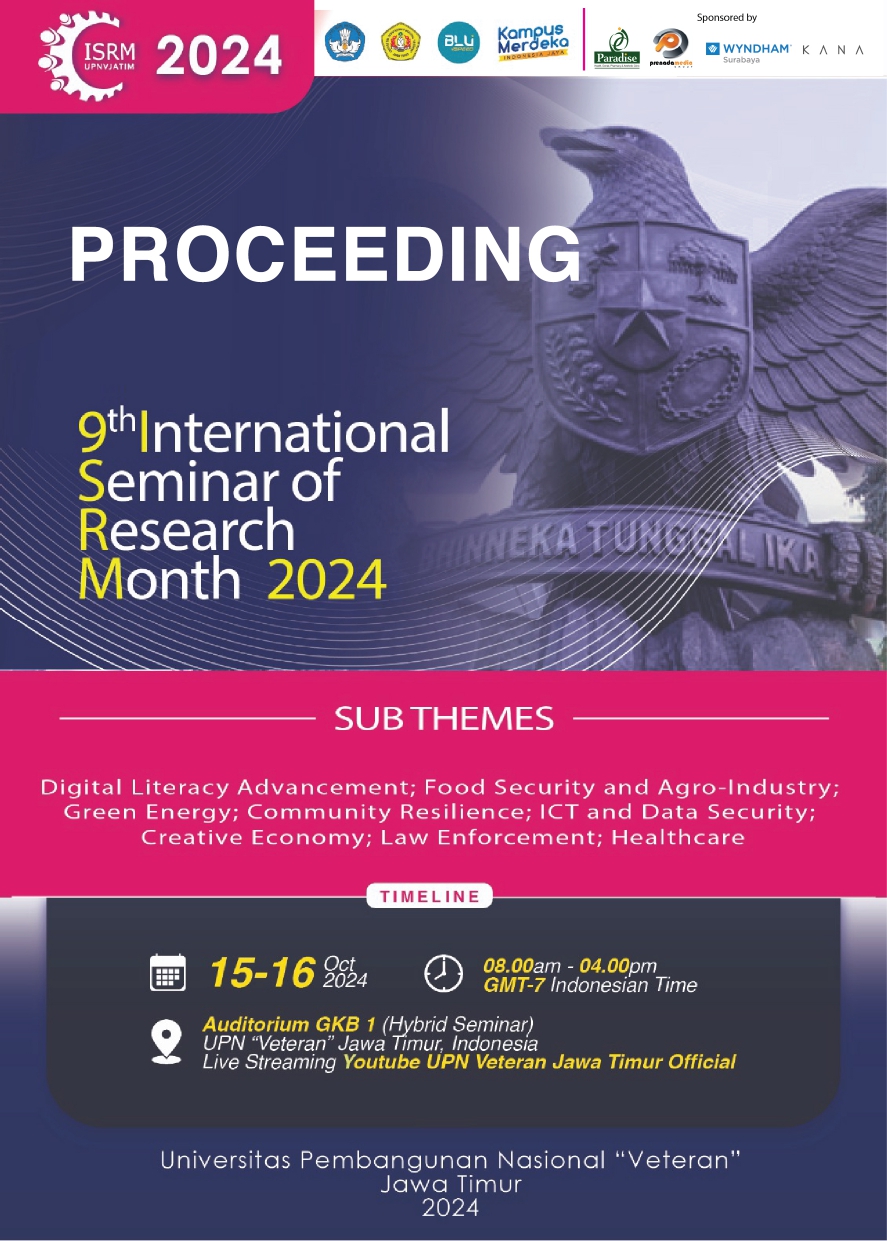Outreach and Training on Mangrove Flour Processing with the Use of Tray Dryer Tools for the Surabaya Mangrove Botanical Garden Community
DOI:
https://doi.org/10.11594/nstp.2025.4739Keywords:
Mangrove, flour, tray dryer, drying, food processingAbstract
The Surabaya Mangrove Botanical Garden, a valuable natural tourist destination, offers a unique experience along the northern coast of Java Island. Spanning 27 hectares, this botanical garden hosts 57 varieties of mangroves. Although managed by the Surabaya city government and BRIN, local community participation is crucial for the sustainability of the mangrove forest. The community engages in various conservation and management activities, as well as in empowering initiatives to process mangrove-derived products. Mangrove fruits are rich in nutrients and bioactive components, with Sonneratia caseolaris and Bruguiera gymnorrhiza being the most commonly utilized by farmers in the Surabaya Mangrove Botanical Garden due to their non-toxic and edible nature. To enhance the value of these mangrove fruits, the local community has been processing them into syrup, with the leftover pulp being processed into flour for use in food products. However, this mangrove flour lacks functional value due to inadequate processing technology. Recognizing this issue, a community service team, in coordination with the garden's management, conducted outreach and training on mangrove flour production using a tray dryer at the Surabaya Mangrove Botanical Garden. The training aimed to teach proper processing methods and introduce technology, such as the design of drying equipment, to produce higher-quality mangrove flour. The approach to enhancing the skills of the local community involved observation, socialization, flour processing training with a tray dryer, and program monitoring and evaluation. The training successfully improved participants' knowledge and skills in using modern drying technology and motivated the community to increase mangrove flour production. Consequently, this method of mangrove flour processing has the potential to support food sustainability and empower the local economy in the Surabaya Mangrove Botanical Garden area.
Downloads
References
Damayanti, A. A., Diarsvitri, W., Nefertiti, E. P., & Rahayu, I. N. (2024). Identification of bioactive compounds from pedada fruit extract (Sonneratia caseolaris) to prevent stunting. Jurnal Profesi Medika: Jurnal Kedokteran Dan Kesehatan, 18(1), 58–66. https://doi.org/10.33533/jpm.v18i1.7491
Dari, D. W., Ananda, M., & Junita, D. (2020). Karakteristik kimia sari buah pedada (Sonneratia caseolaris) selama penyimpanan. Jurnal Teknologi Pertanian Andalas, 24(2), 189. https://doi.org/10.25077/jtpa.24.2.189-195.2020
Dari, D. W., Junita, D., Yusra Arsita, Mila Meilina, & Vita Meylani. (2022). Chemical characteristics of juice of mangrove apple (Sonneratia caseolaris) added with sugar. International Journal of Frontiers in Life Science Research, 2(1), 018–028. https://doi.org/10.53294/ijflsr.2022.2.1.0023
Dewi, S. A. K. (2022). Konservasi kebun raya mangrove gunung anyar surabaya sebagai implementasi praktis dalam pelestarian kembali ekosistem. Jurnal Kewarganegaraan, 6(2), 4971–4977. http://journal.upy.ac.id/index.php/pkn/article/view/4052
DKPP. (2024). UPT Kebun Raya Mangrove. Pemerintah Kota Surabaya Dinas Ketahanan Pangan Dan Pertanian. https://dkpp.surabaya.go.id/UPT-KebunRayaMangrove/index.html
Hamamah, N. (2023). Kebun raya mangrove: Lestarikan lingkungan Surabaya. Good News from Indonesia. https://www.goodnewsfromindonesia.id/2023/12/01/kebun-raya-mangrove-lestarikan-lingkungan-surabaya.
Jariyah, & Nurismanto, R. (2016). Penerapan teknologi pengolahan tepung buah mangrove jenis padada (Sonneratia caseolaris) Pada Kelompok Tani Mangrove Di Wonorejo Timur Surabaya. Jurnal REKAPANGAN, 11(2), 1–6.
Mulyatun, M. (2019). Pemberdayaan masyarakat pesisir berbasis potensi lokal; Alternatif ketahanan pangan berupa tepung magrove. Dimas: Jurnal Pemikiran Agama Untuk Pemberdayaan, 18(2), 211. https://doi.org/10.21580/dms.2018.182.3260
Ramadani, D. T., Dari, D. W., & Aisah, A. (2020). Daya terima permen jelly buah pedada (Sonneratia caseolaris) dengan Penambahan Karagenan. Jurnal Akademika Baiturrahim Jambi, 9(1), 15. https://doi.org/10.36565/jab.v9i1.151
Rosulva, I., Hariyadi, P., Budijanto, S., & Boing Sitanggang, A. (2021). Potensi buah mangrove sebagai sumber pangan alternatif potential of mangrove fruit as an alternative food source. Jurnal Teknologi Hasil Pertanian, 14(2), 131–150.
Setiawan, A. (2023). Indonesia kini miliki kebun raya mangrove. INDONESIA.GO.ID. https://indonesia.go.id/kategori/budaya/7305
Sulistyawati, S., Hidayanto, F., & Mahfud, R. I. (2021). Pemanfaatan ekstrak buah mangrove putut (Bruguiera gymnorrhiza) sebagai bahan pembuatan sabun cair di Kabupaten Pasuruan. Jurnal Terapan Abdimas, 7(1), 35. https://doi.org/10.25273/jta.v7i1.9196
Downloads
Published
Conference Proceedings Volume
Section
License

This work is licensed under a Creative Commons Attribution 4.0 International License.
Authors who publish with this proceedings agree to the following terms:
Authors retain copyright and grant the Nusantara Science and Technology Proceedings right of first publication with the work simultaneously licensed under a Creative Commons Attribution License that allows others to share the work with an acknowledgement of the work's authorship and initial publication in this proceeding.
Authors are able to enter into separate, additional contractual arrangements for the non-exclusive distribution of the proceedings published version of the work (e.g., post it to an institutional repository or publish it in a book), with an acknowledgement of its initial publication in this proceeding.
Authors are permitted and encouraged to post their work online (e.g., in institutional repositories or on their website) prior to and during the submission process, as it can lead to productive exchanges, as well as earlier and greater citation of published work (See the Effect of Open Access).









